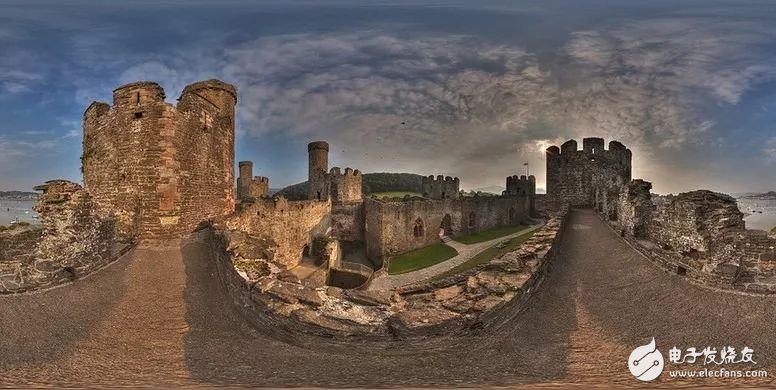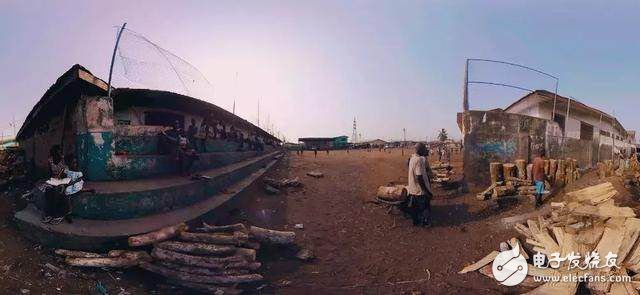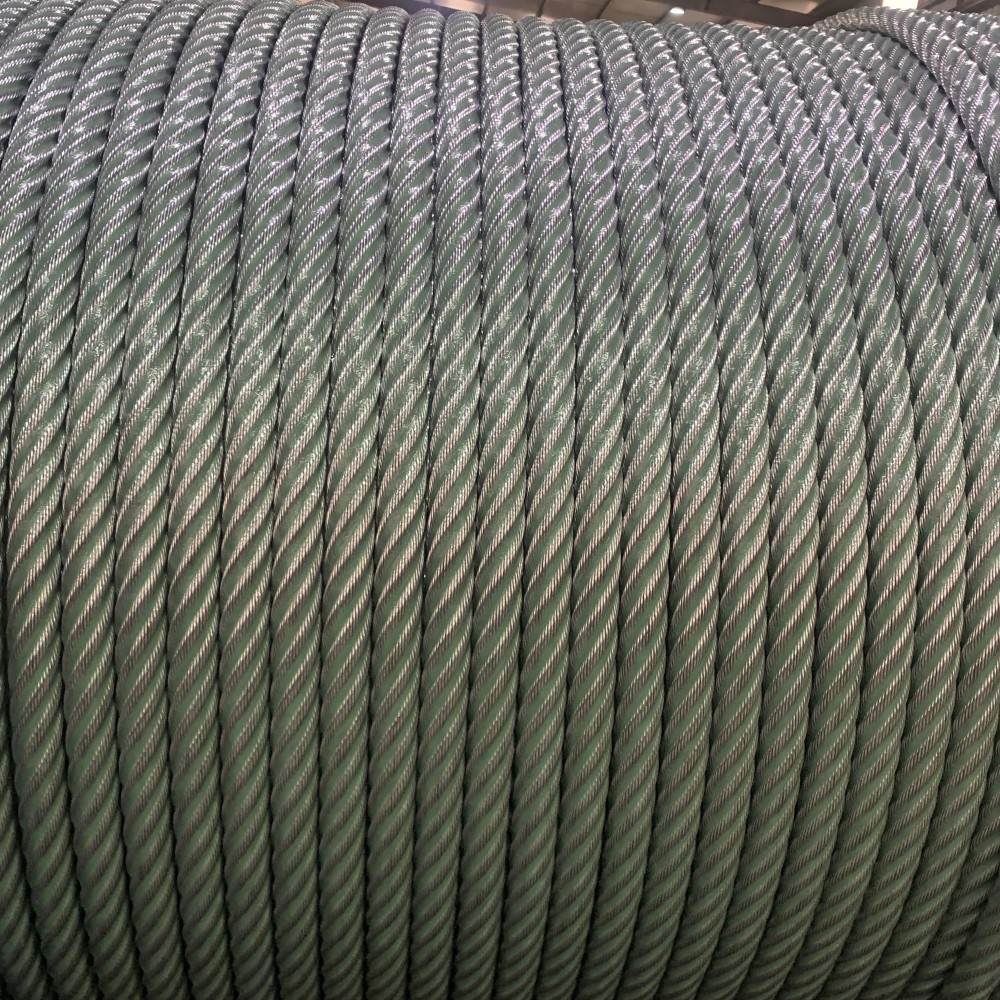The recently released movie "I am not a medicine god" won a big box office win, but also caused a wave of sighs on the Internet. Many people expressed their empathy. The editor struggled to find time to read the gun version, and I am really embarrassed to speak here, but when it comes to empathy, I still want to continue to talk about VR with everyone, oh! No...It’s not that the editor talked to you, but today ARC invited Paul, a senior practitioner in the AR/VR industry, to talk to you about VR movie related topics~
ARC: What are the teams or equipment used for VR movie shooting? Is it a commonly used panoramic shooting device or is there a device dedicated to serving VR movies?
Paul: Film shooting is a very professional field, with strict requirements and technical standards for framing, camera positions, and creativity.
For example, in 2016, the HeadcaseVR team officially unveiled a new mobile VR shooting solution. This entrepreneurial team comes from Hollywood. Specializes in VR film shooting. It mainly uses 17-mesh Codex AcTIon Cameras. Codex Cam has a 12bitRAW recording system and 13.5 files of high dynamics. Using 2/3 inch CCD sensor, single resolution 1920&TImes;1080. 23.98fps-60fps frame rate performance. HeadcaseVR used Volumetric Capture, translated into Chinese called "Volume Capture" to shoot this video of the Banyo Waterfall on the Sino-Vietnamese border, recording all the physical environment of the area around the camera like a three-dimensional scan. The single frame size reaches 3GB.

The domestic team has J2VR-Jitu Panorama, which is our Chinese team. J2VR is also a movie and VR solution after several generations of updates. Four RedDragons are used to shoot and collect in four directions respectively. Finally reached the standard of 24K recording 100FPS. The simplest and most cost-effective way is to talk about the multi-eye GoPro solution. The multi-eye black dog 4 solution is born for cost performance. It can be owned at a cost of about 20,000 to 30,000 yuan. It is currently the most common quasi-commercial panoramic entry device. The operation is simple, the cost is low, and the threshold is low. The domestic VR software and hardware technical standards will also be like our computers, the update iteration will be very fast, we will pay attention to it together.
ARC: VR movies actually look more like immersive experience "games." And there is a saying that VR is the art of the audience. Since the scene and viewpoint are not under the full control of the director, do you think the narrative art will be greatly compromised compared to traditional movies? How is the art form different from traditional VR movies?
Paul: I think VR movies are a technological advancement. Changing the traditional movie camera to a 360-degree camera allows viewers to turn their heads to watch 360-degree scenes at will. Youtube has a VR channel, Google has Google Spotlight Stories, both are This traditional film technique is accompanied by a 360-degree camera.
A VR movie may not be just a technological advancement like a movie from silent to sound, from black and white to color, or from 2D to 3D. It may be a leap forward in artistic category, just like the transformation of painting into Sculpture, or a leap forward from photography to film. The movie pops out of a window on a two-dimensional screen and enters a three-dimensional space. The increase in all types of art has such a dimensional transformation. This includes the dimension of space as well as the dimension of time. So I think VR movies have transformed the two-dimensional graphic narrative art of traditional movies into an immersive, multi-dimensional art expression. The audience is really immersive in the VR movie.

The current stage should be called panoramic narration. It is not a real VR movie, but a transitional stage from traditional movie to VR movie. In the future, more VR movies will use game engines for real-time rendering instead of traditional movies or animation shooting, because audiences need to independently explore the artistic stories in movies in such a virtual environment.
ARC: As far as the VR film and television industry is concerned, pornographic content suddenly occupies the leading role. Do you think it is the driving force or hindrance to the development of VR movies on the right track?
Paul: That must be a boost. The development of the VR film and television industry and technological advancement can bring users a better experience. Good content will definitely become the core of VR film and television. For example, the VR documentary "Wave of Grace" truly shows the status quo in Liberia where the disease is raging. When you put on the VR headset and put yourself in the documentary, you will feel that you are standing in a certain cemetery in Liberia, some wearing anti-chemicals. Volunteers from the service are burying an Ebola virus victim. You feel as if you are about to fall into the grave, and when you realize that you are surrounded by hundreds of graves, the fragility of life strikes you.

This real sense of substitution is simply more shocking than ten news reports combined, which is unmatched by traditional movies. The 360° panoramic experience of VR technology is a huge leap in visual experience. A certain degree of experience is more attractive to the audience than some superb lens language.
ARC: The shooting of VR movies is different from traditional movies. What are the main difficulties in shooting technology?
Paul: VR movies have a 360° perspective. On the one hand, this is a visual advantage that traditional movies cannot match. On the other hand, VR movies are more difficult to deal with in the narrative structure and story perspective. This disruptive change not only requires the script to include a multi-linear narrative structure, but also requires directors to have more creativity. However, the immaturity of the current VR technology greatly limits their imagination and creativity. It seems that such contradictions are still difficult to reconcile. To give a simple example, in the shooting of a detective film such as "Holmes", when the detective finally gathers with the crowd to analyze the case, how should the director, photography, and editing meet the audience's hope that the perspective is in the detective, the criminal suspect, Obviously the difficulty is not as high as the constant flashbacks of onlookers, crowds and other characters and movie scenes.

ARC: What level do you think the current VR film and television industry has reached? What are the main reasons?
Paul: Even though VR+ film and television looks so attractive, due to the current environment's cautious investment in VR and its own problems, VR film and television are still facing a difficult situation. We can see that most of today's VR film and television works are mainly short films, and can not even be called movies. This is mainly because the lack of montage largely affects the length and fluency of VR narratives. Montage is a lens language developed by people to adapt to flat film and television. It is the most basic and unique artistic expression method of film.
Montage: generally includes two aspects of picture editing and picture synthesis.
Picture composition: a unified picture work composed of many pictures or patterns juxtaposed or superimposed.
Picture editing: The method or process of making this artistic combination is to arrange and combine a series of shots shot in different locations, from different distances and angles, and in different ways to narrate the plot and portray characters.
The use of montage techniques can greatly enrich the expressive power of film art, thereby enhancing the appeal of film art. A series of reasons such as the difficulty of creation, the improvement of the level of hardware technology and the popularity, the high cost and the difficulty of realizing, the limitation of VR on the types of film and television, and the possibility of facing a new film censorship mechanism will become the limiting conditions for the development of the VR film and television industry.
Special Wire Rope For Port And Engineering Machinery

special wire rope, wire rope for port machinery, wire rope for engineering machinery
ROYAL RANGE INTERNATIONAL TRADING CO., LTD , https://www.royalrangelgs.com